Mexican desserts showcase a rich and diverse culinary world that will make any dessert lover’s taste buds tingle with excitement. Mexican desserts offer a delightful journey through flavors and textures. With some of them quite common around the world like churros, crispy tubes of fried dough dusted with sugar and cinnamon, or flan, a creamy caramel custard with a silky-smooth texture.
There are also Mexican desserts that are less commonly known globally, but equally delicious. Tres leches cake, for example, is a moist sponge cake soaked in three types of milk, creating a creamy experience.
The vibrant colors, bold spices, and authentic ingredients used in Mexican desserts are sure to leave you craving more. They perfectly complement the bold and diverse flavors of Mexican cuisine, providing a sweet and satisfying ending to any meal.
So, if you’re a dessert lover like me, get ready for a delightful journey through the world of Mexican sweets. You can explore the history behind these treats, all while enjoying some amazing photos that capture their irresistible allure. It’s a dessert adventure you won’t want to miss!
Churros
Churros have a fascinating history that traces back to Spain. The origin of churros, as is with the most of Mexican traditional desserts, is a matter of debate, with several countries claiming to be the birthplace of this fried dough pastry. The most likely origin is Spain, where churros have been enjoyed for centuries. They are also popular in Portugal, France, Latin America, and the Philippines.
Some people believe that churros were inspired by a traditional Chinese snack known as Youtiao, which Spanish sailors encountered during their travels to East Asia in the 16th century.
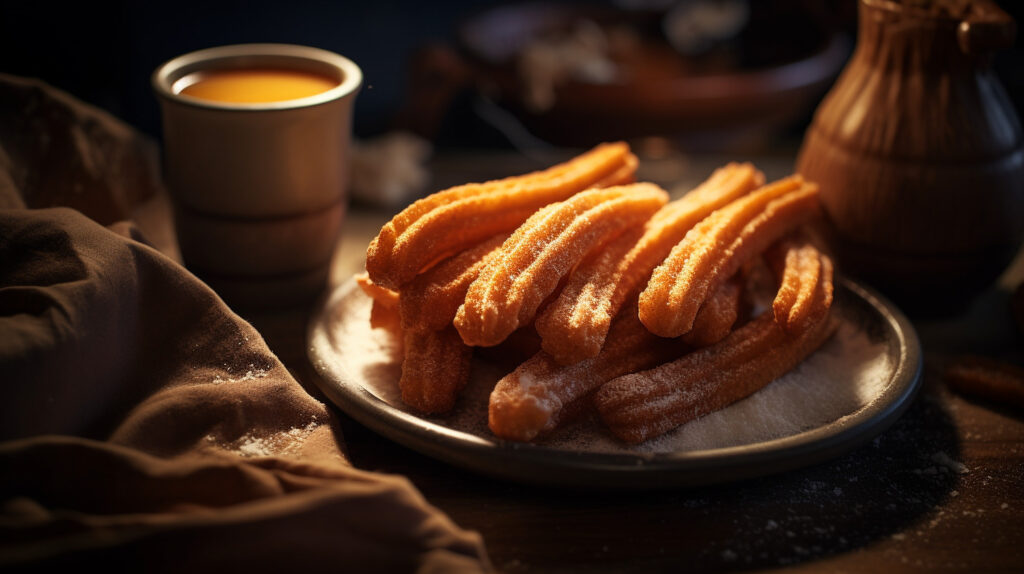
There is no evidence to suggest that churros were inspired in China. The earliest known record of churros comes from a Spanish cookbook published in 1617. This suggests that churros were originally made in Spain.
Although, Youtiao is also made from fried dough they are typically long and thin, and they are often served for breakfast dipped in soy sauce.
It is more likely that churros and youtiao developed independently of each other.
Churros were originally made by mixing flour, water, and salt, forming a dough that was then piped through a star-shaped nozzle before being deep-fried until golden and crispy. They were often enjoyed for breakfast or as a snack, traditionally dipped in hot chocolate or served with a sprinkle of sugar.
Churros eventually spread throughout the Spanish-speaking world, including Mexico, where they gained immense popularity. Today, churros are enjoyed in various forms and preparations across different cultures. Because it’s so simple to make and has all the ingredients of a successful dessert (fried dough + sugar) this treat has also found its way into amusement parks, fairs, and street food markets worldwide, captivating dessert enthusiasts with its irresistible taste and unique shape.
Concha Bread
As always, the origin of Mexican concha bread is a matter of debate, with several countries claiming to be its birthplace. The most likely origin is Spain, where a similar pastry called rosquilla is popular. Rosquillas are made with a yeast dough and are often topped with a sugar glaze or sprinkles.
Concha bread is thought to have been brought to Mexico by Spanish colonists in the 16th century. The name “concha” comes from the Spanish word for “shell,” which refers to the distinctive shell-like shape of the bread.

Concha bread is now a popular pastry in Mexico and is often served for breakfast or as a snack. It is also popular in other Latin American countries, such as Guatemala, Honduras, and El Salvador.
There are many different variations of concha bread, but the basic ingredients are the same: flour, water, yeast, sugar, and salt. The dough is then shaped into a ring and topped with a sugar glaze or sprinkles.
The most common topping for concha bread is a white sugar glaze, but other toppings, such as chocolate sprinkles, cinnamon sugar, or coconut flakes, are also popular.
Concha bread is a delicious and versatile pastry that can be enjoyed in many different ways. It is a popular breakfast food, but it can also be served as a snack or dessert.
Flan and Chocoflan
The most likely origin of flan dessert is the Ancient Rome, where a similar custard called olla dulcis was popular. Olla dulcis was made with eggs, milk, and honey, and was cooked in a pot over a fire.
There are many different variations of flan, but the basic ingredients are the same: eggs, milk, sugar, and vanilla. Some variations also include condensed milk or evaporated milk. The custard is then baked in a water bath to prevent it from curdling.
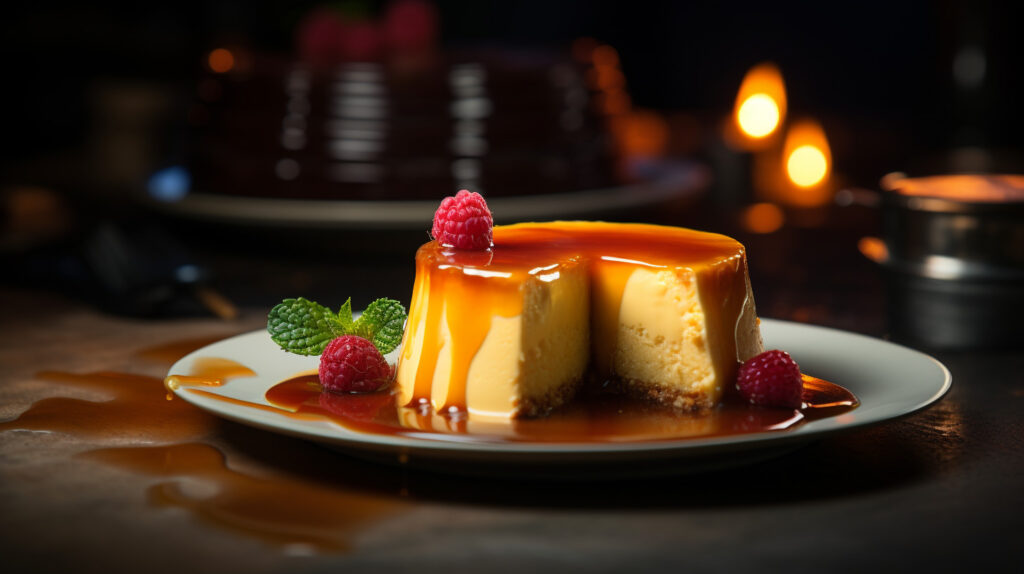
Flan is a popular dessert in many countries around the world. It is a delicious and versatile dessert that can be enjoyed on its own or with other toppings, such as fruit, whipped cream, or chocolate sauce.
Flan spread to other parts of Europe during the Roman Empire, and eventually to Spain. In Spain, flan became known as flan de huevo, and it is still a popular dessert today.
From Spain, it was brought to Mexico during the colonial period.
Traditional Mexican flan is made from a mixture of eggs, milk, sugar, and vanilla, which is then baked in a caramel-coated mold. The result is a smooth and creamy custard with a sweet caramel sauce.
On the other hand, chocoflan, also known as “pastel imposible” or “impossible cake,” because it seems to defy baking logic. When the cake is baked, the flan batter sinks to the bottom of the pan and the chocolate cake batter rises to the top.
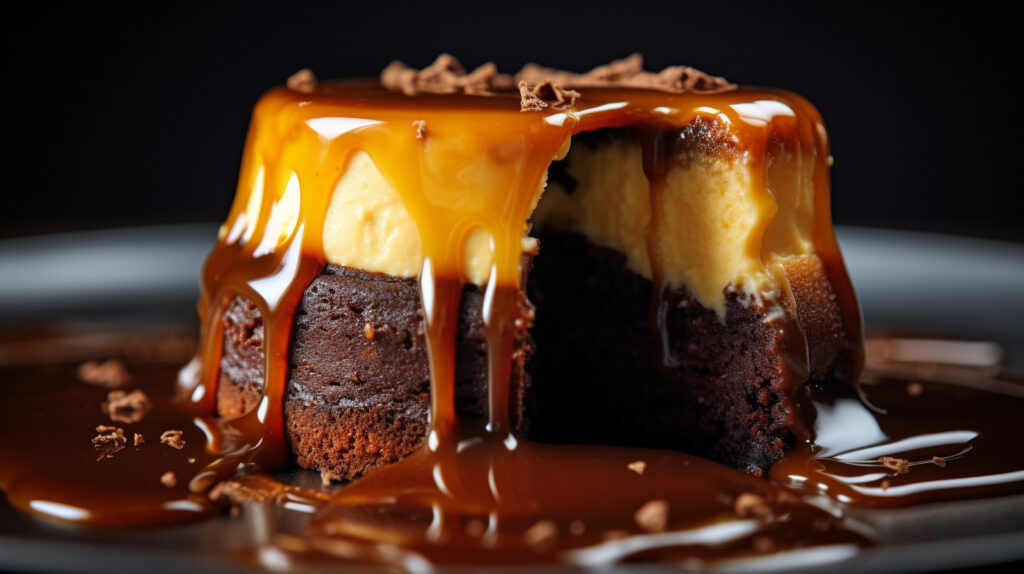
It is believed to have originated in Mexico and is an integral part of Mexican desserts family.
Tres Leches Cake
The Tres Leches cake is known as pastel de tres leches. It is also popular in Central America, South America, and the Caribbean.
The earliest known recipe for tres leches cake was published in a Mexican cookbook in 1867. However, the cake may have originated even earlier, as there are similar cakes mentioned in Spanish cookbooks from the 16th century.

The name tres leches literally means “three milks” in Spanish. The three milks are evaporated milk, condensed milk, and heavy cream. The cake is soaked in these milks, which makes it moist and flavorful.
Tres leches cake is typically made with a sponge cake, but it can also be made with other types of cake, such as chiffon cake or pound cake. The cake is then soaked in the milk mixture and topped with whipped cream, fruit, or other garnishes.
Sopapilla Cheesecake Bars
Sopapilla Cheesecake Bars are a Mexican dessert that is a fusion of two popular desserts: sopapillas and cheesecake. Sopapillas are fried dough pastries that are often topped with honey or syrup. Cheesecake is a custard dessert that is made with cream cheese, eggs, and sugar.
The origin of Sopapilla Cheesecake Bars is a matter of debate, with several people claiming to have created it. However, the most likely origin is in Mexico, where sopapillas and cheesecake are both popular desserts.
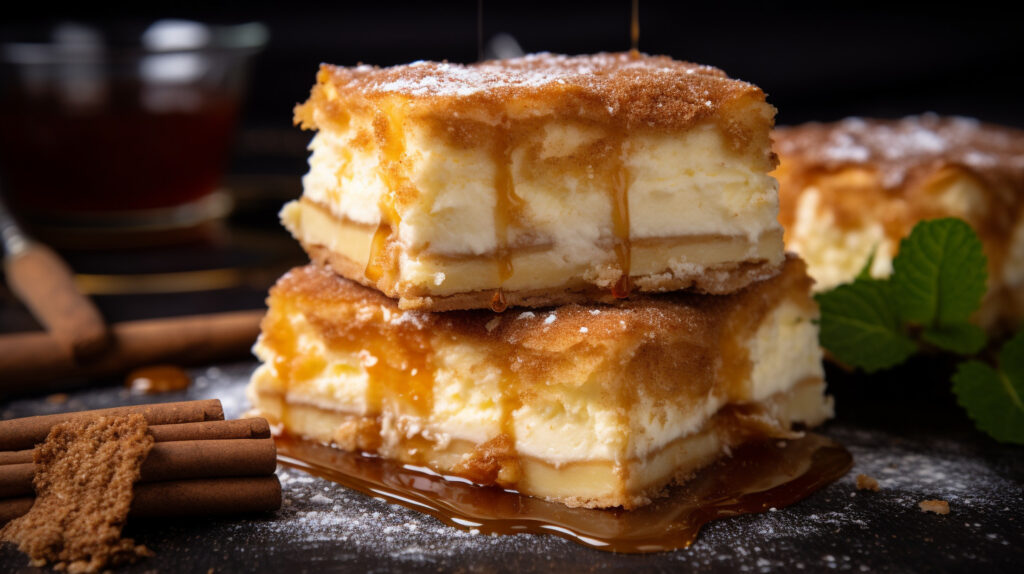
Sopapilla Cheesecake Bars are typically made with a base of fried sopapillas. The sopapillas are then topped with a layer of cheesecake filling. The cheesecake filling is made with cream cheese, eggs, sugar, and vanilla extract. The bars are then baked until the cheesecake filling is set.
Sopapilla Cheesecake Bars are a delicious and decadent dessert that is perfect for special occasions. They are also a great way to use up leftover sopapillas.
Champurrado
Champurrado is a thick Mexican chocolate drink made with corn flour, water, and chocolate. It is similar to atole, but it has a thicker consistency and a more intense chocolate flavor.

The origin of champurrado is a matter of debate, with some people claiming that it originated in Mexico and others claiming that it originated in Spain. However, the most likely origin is in Mexico, where it has been a popular drink for centuries.
Champurrado is typically served hot and can be topped with whipped cream, cinnamon, or other toppings. It is a popular drink during the Day of the Dead celebrations, and it is also often served at other special occasions, such as weddings and birthdays.
Mangonada
The origin of mangonada is a matter of debate, with some people claiming that it originated in the city of Guadalajara and others claiming that it originated in the state of Michoacán. However, the most likely origin is in the state of Jalisco, where it has been a popular dessert for centuries.
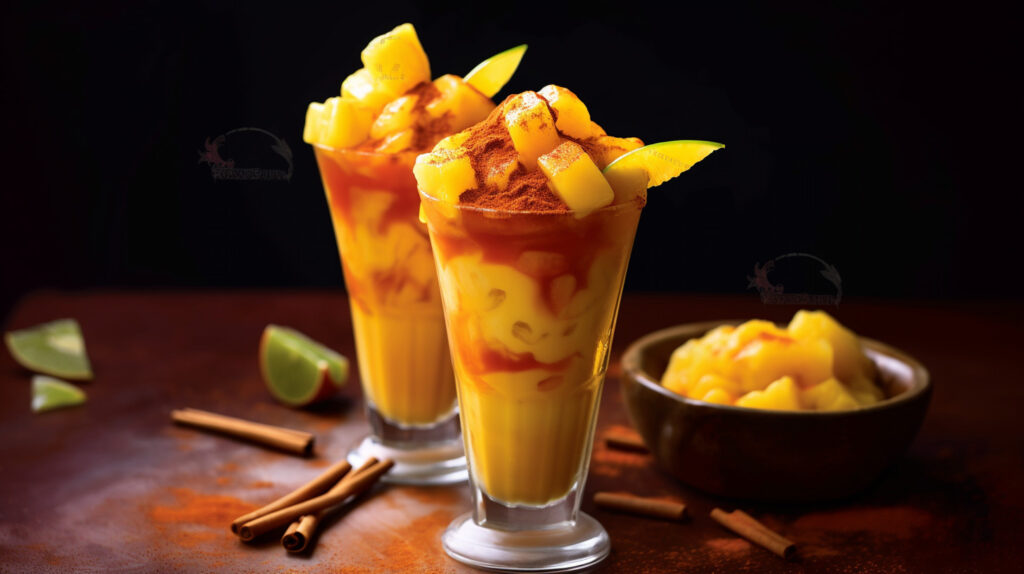
Mangonada is typically made with ripe mangoes, which are peeled, cubed, and then blended with water or milk. The blended mangoes are then poured over shaved ice and topped with a variety of toppings, such as chamoy, chili powder, peanuts, and crumbled cheese.
Chamoy is a salty, sour, and spicy sauce that is made with pickled fruits and vegetables. It is a popular condiment in Mexico and is often used to flavor mangonadas. Chili powder is a ground chili pepper that adds heat to the mangonada. Peanuts add crunch and flavor, and crumbled cheese adds richness.
Mangonada is a delicious and refreshing dessert that is perfect for a hot day. It is also a fun and interactive dessert to eat, as the toppings can be customized to your liking.
Polvorones
Polvorones are a Mexican shortbread cookie made with flour, sugar, butter, and almonds. They are typically shaped into small balls and rolled in confectioners’ sugar.
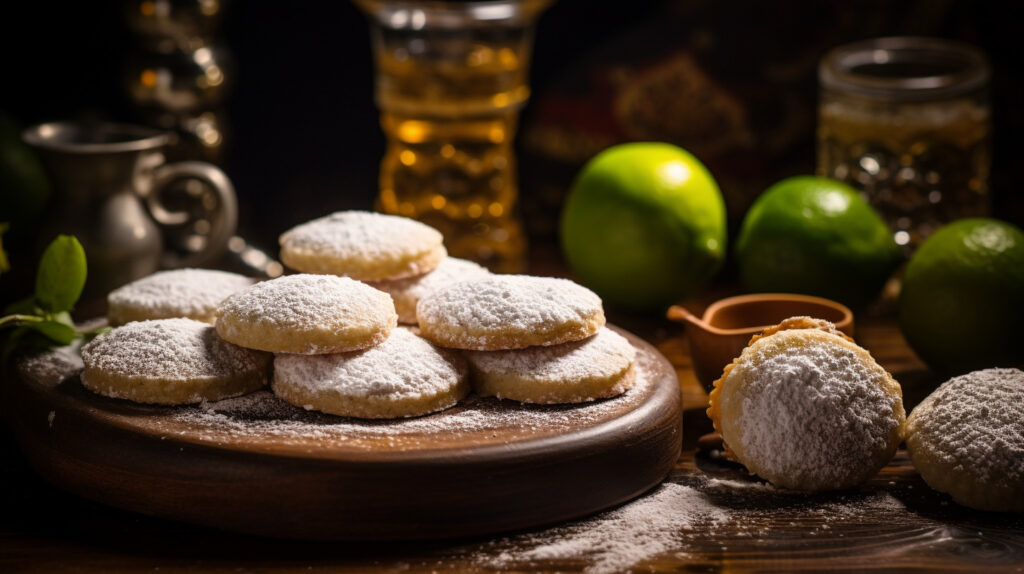
Polvorones were brought to Mexico by Spanish colonists in the 16th century. They quickly became popular in Mexico and are now a popular holiday cookie.
Polvorones are typically made during the Christmas season and are often given as gifts. They are also a popular dessert at parties and other special occasions.
Capirotada
Mexican capirotada is a traditional dessert that holds deep historical and cultural significance. Its origins can be traced back to the Mexican colonization period, blending Spanish and indigenous influences. Capirotada is a unique and delicious bread pudding that is traditionally prepared during Lent, especially during the Holy Week leading up to Easter Sunday.
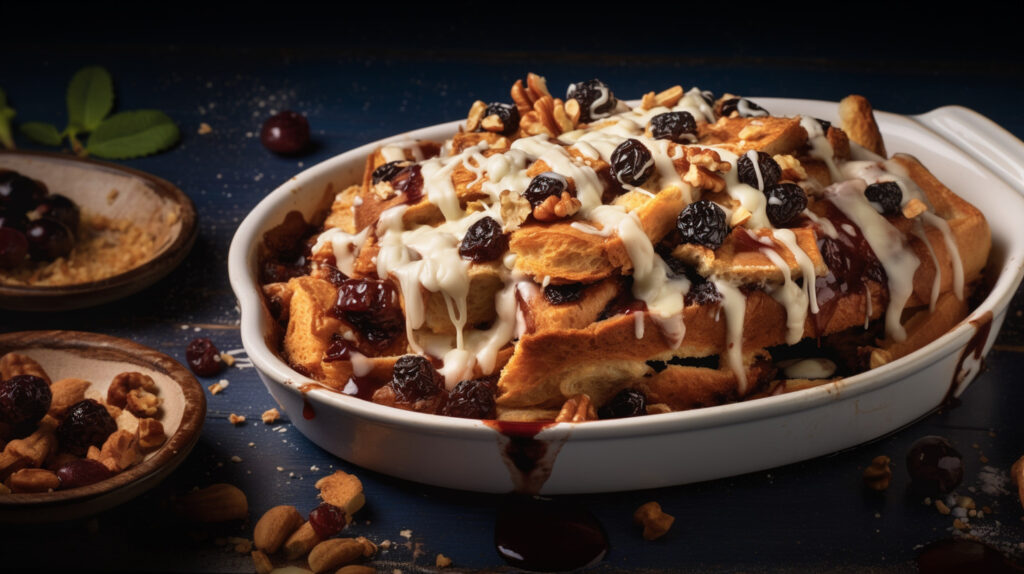
Capirotada is typically made with a variety of dried fruits, such as raisins, figs, and prunes. It is also made with nuts, such as almonds and walnuts, and spices, such as cinnamon and cloves. The bread is soaked in a mixture of milk, wine, and sugar, and then layered with the dried fruits, nuts, and spices. The capirotada is then baked until the bread is golden brown and the custard is set. The combination of these elements results in a complex and delightful flavor profile, balancing sweetness, warmth, and a touch of savory.
Besides its delectable taste, capirotada also has a symbolic significance. The ingredients used in this dish often represent various aspects of the Passion of Christ. The bread represents the body of Christ, the dried fruits represent the thorns that were placed on Christ’s head during his crucifixion, the nuts represent the nails that were used to crucify him, and the spices represent the myrrh and frankincense that were offered to him at his birth.
The dish is also seen as a way to atone for sins and to ask for forgiveness. The long, thin bread symbolizes the long road to redemption, and the dried fruits and nuts symbolize the obstacles that must be overcome.
Capirotada is a delicious and decadent dessert that is perfect for Lent. It is also a fun and interactive dessert to eat, as the dried fruits and nuts can be customized to your liking.
Pan De Muerto
Pan de Muerto (Spanish for Bread of the Dead) is a traditional sweet bread that is widely consumed in Mexico during the celebration of Día de los Muertos (Day of the Dead). It holds significant cultural and historical importance in Mexican tradition.
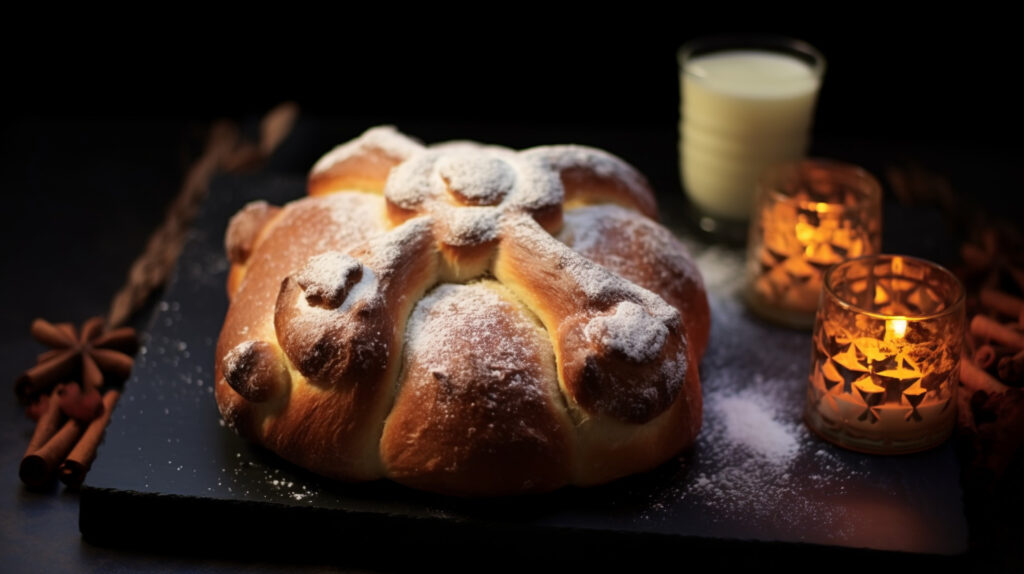
The origin of Pan de Muerto can be traced back to pre-Columbian times when the Aztecs and other Mesoamerican civilizations had their own rituals and beliefs surrounding death. After the Spanish colonization, the Catholic influence merged with these indigenous traditions, giving rise to Día de los Muertos as we know it today.
Pan de Muerto is typically round or oval-shaped bread, often decorated with bone-shaped or skull-shaped dough on top, representing the spiritual remains of the deceased. It is made with ingredients such as flour, sugar, yeast, eggs, water, and orange blossom water or zest. The top of the bread is dusted with sugar to mimic the appearance of bones.
Ingredients in Pan de Muerto have some symbolic meanings:
- The wheat flour represents the earth.
- The sugar represents sweetness and life.
- The butter represents fertility and abundance.
- The eggs represent new beginnings.
- The spices represent the four elements: earth, air, fire, and water.
This bread serves as an offering or “ofrenda” placed on altars dedicated to deceased loved ones during Día de los Muertos. It is believed that the spirits of the deceased return to the world of the living on these days, and the bread acts as sustenance for their journey. Families also consume the bread themselves, sharing it among relatives and friends.
Pan de Muerto carries various symbolic meanings. The round shape represents the cyclical nature of life and death, while the bone-shaped adornments signify the connection between the living and the dead. The flavors and aromas of the bread are meant to entice the spirits to return and join the celebrations.
Arroz con Leche
Arroz con Leche (rice pudding) is a traditional Mexican dessert with a history rooted in both Spanish and indigenous culinary traditions. While its exact origin is unclear, it is believed to have been brought to Mexico during the colonial era by the Spanish.
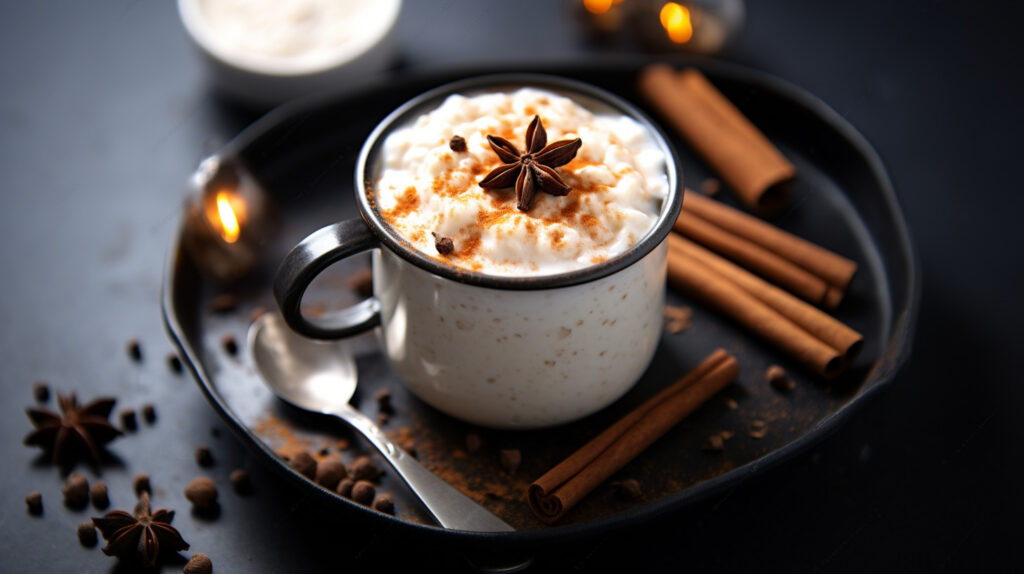
Arroz con Leche is made by simmering rice with sweetened milk and often flavored with ingredients like cinnamon, vanilla, and lemon zest. It is typically served warm or cold and can be topped with nuts or fruits. Depending on the region or family recipe, slight variations in ingredients and method may exist.
As for its historical significance, while Arroz con Leche may not have any direct political or cultural meanings, it holds a significant place in Mexican cuisine as a beloved traditional dessert. It is often associated with cultural celebrations, holidays, and family gatherings. Like many traditional dishes, it carries nostalgia and evokes a sense of heritage and unity among communities.
In a broader context, rice pudding itself has a long history tracing back to ancient civilizations such as the Greeks and Romans. It has been adapted and transformed in various cultures over time, each adding its own unique touch and flavors.
Buñuelos
Mexican Buñuelos are a traditional dessert that consists of deep-fried dough, typically flavored with cinnamon and often topped with powdered sugar or a sweet syrup. They are popular in Mexico, particularly during holidays and special occasions like Christmas.
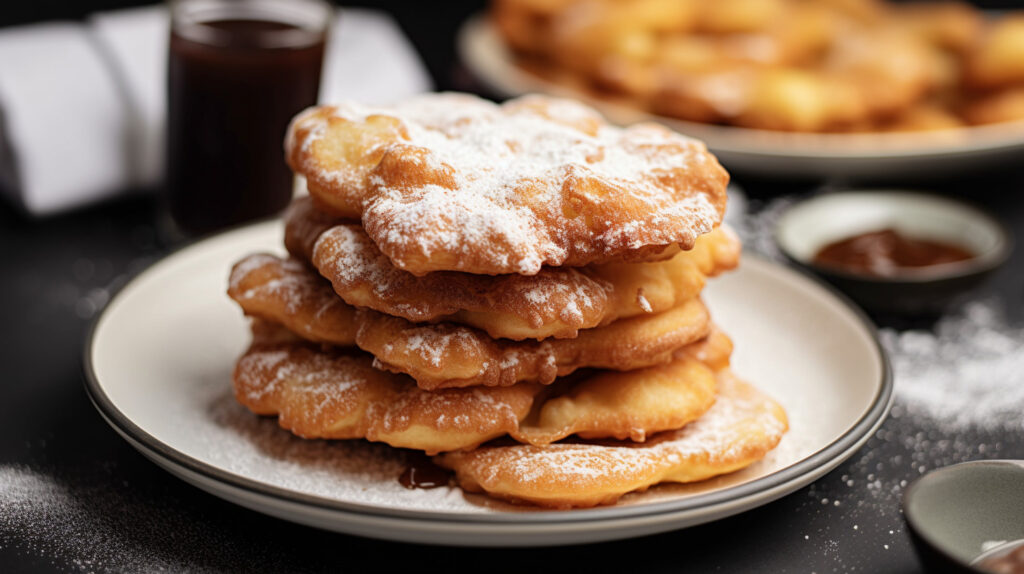
The origin of Buñuelos can be traced back to the Middle East, specifically to Arab cuisine. The Moors brought this sweet dish to the Iberian Peninsula during their occupation and later it was introduced to Mexico through Spanish colonization.
In terms of historical significance, Buñuelos hold cultural and social importance in Mexico. They have become an integral part of Mexican gastronomy and are often associated with celebrations and festive occasions. Their presence during Christmas and other religious celebrations is significant, as they symbolize abundance and prosperity. Sharing Buñuelos with family and friends is a common tradition, fostering social bonding and creating a sense of togetherness.
Overall, Mexican Buñuelos have a rich historical background, representing the influence of Arab cuisine in Mexico’s culinary traditions.
Empanadas de Cajeta
Empanadas de Cajeta are a traditional Mexican pastry filled with Cajeta, a caramel-like sauce made from goat’s milk. The origin of Mexican dessert is quite intertwined with the history and culture of Mexico.
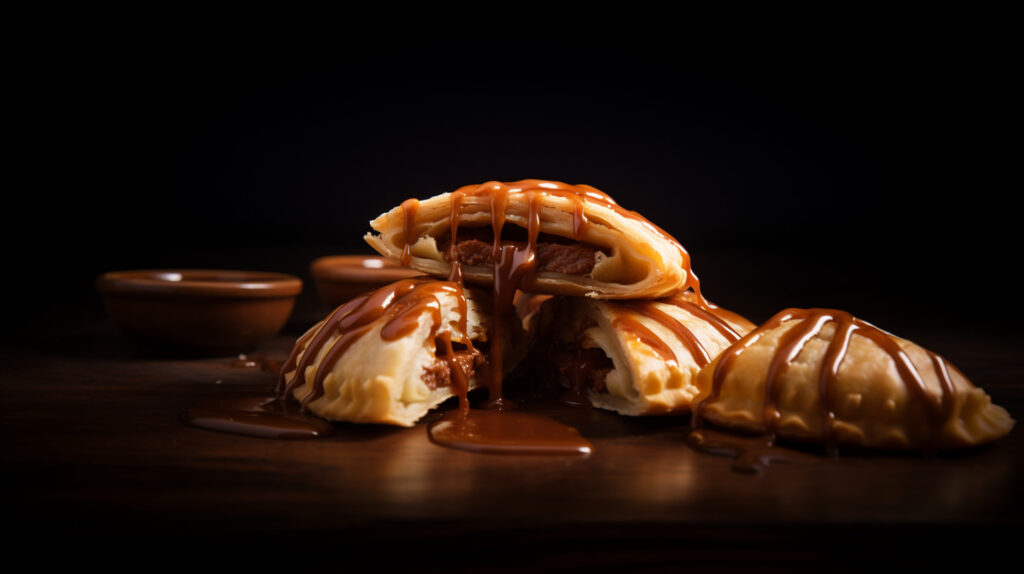
The practice of making cajeta dates back to the colonial period of Mexico, when dairy production was introduced by the Spanish. It is believed that cajeta originated in the Celaya region, in the state of Guanajuato. This region is famous for its high-quality goat’s milk, which is a primary ingredient in making cajeta.
The term “empanada” derives from the Spanish verb “empanar,” which means “to coat with bread.” Initially, empanadas referred to savory turnovers filled with meat or vegetables. However, in Mexico, sweet empanadas filled with various ingredients, including cajeta, became popular.
I like the valuable information you provide in your articles.
I’ll bookmark your weblog and check again here regularly.
I am quite sure I’ll learn a lot of new stuff right here!
Best of luck for the next!
You’re right, they are the main Mexican desserts, thank you for showing Athena dessert of my country.
really miss your recommendations and videos.